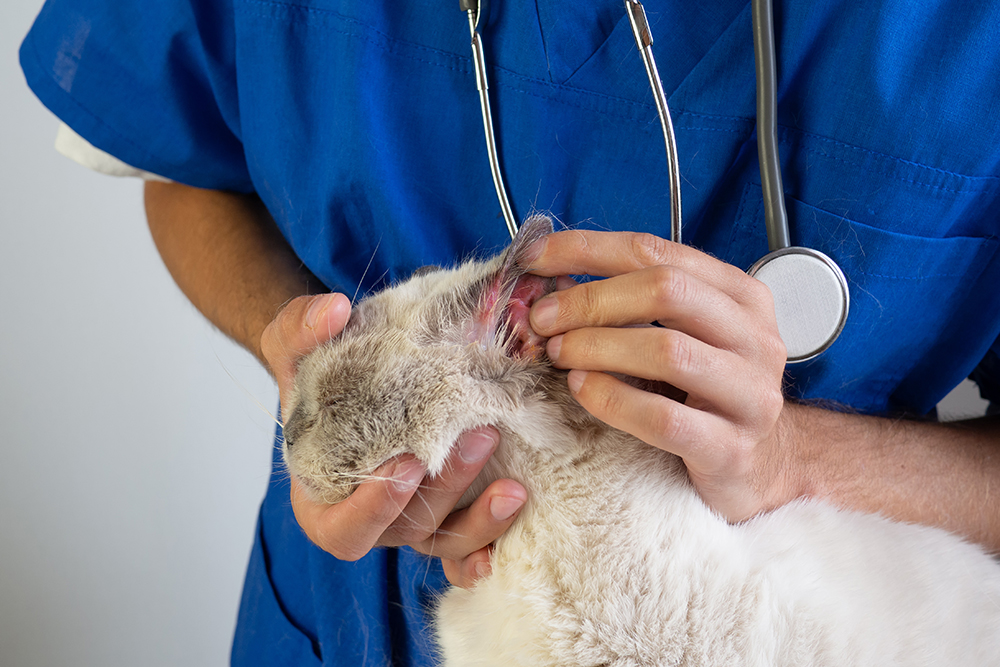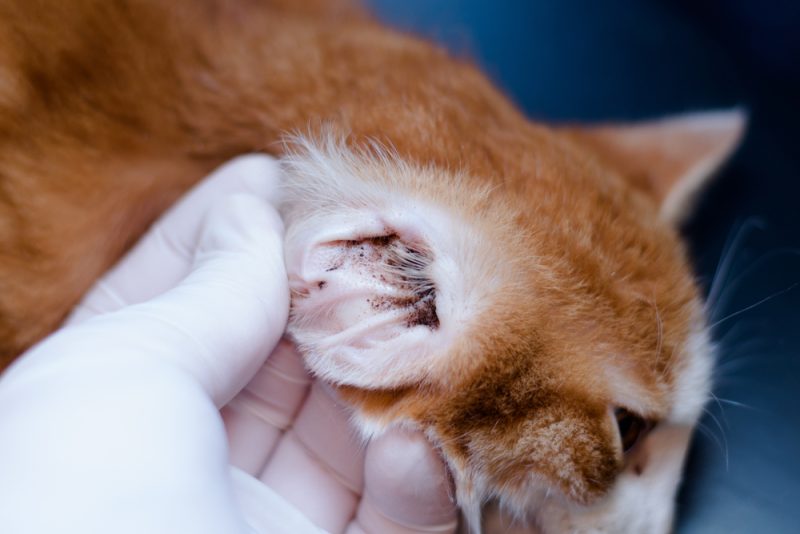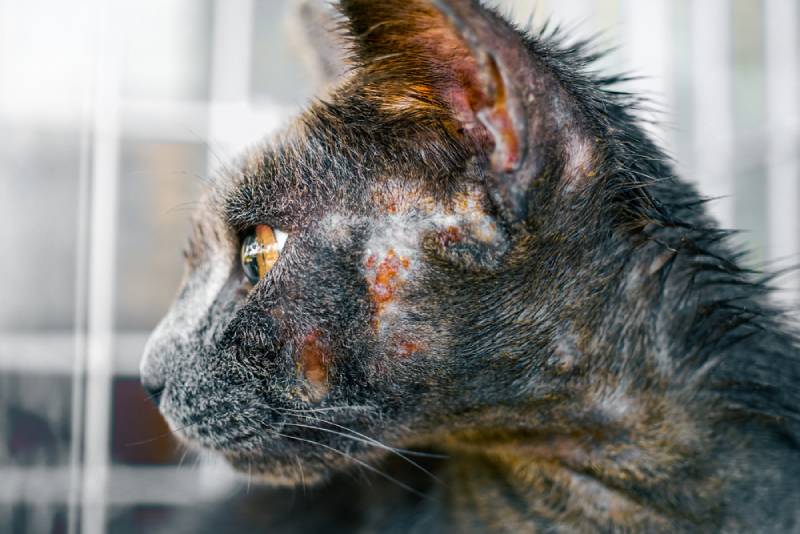In this article
View 5 More +Ear mites may be small in size, but they can cause significant discomfort to your cat. Most people are aware that ear mites exist, and that they are a fairly common cause of ear problems in cats. But for most people, the knowledge stops there.
So, what are ear mites in cats, and why do we need to worry about them?

What Are Ear Mites in Cats?
The technical name for feline ear mites is Otodectes cynotis. These mites are eight-legged critters that can’t usually be visualized with the naked eye. If you have sharp eyesight, you might notice them as tiny white spots crawling along the surface of your cat’s ear. Vets will often use an otoscope or microscope to identify ear mites.
Ear mites make their home in the cat’s ear canal, on the surface of the skin, feeding on skin oils and ear wax. In the process, they cause significant discomfort and inflammation.

What Are the Signs of Ear Mites in Cats?
You will rarely see the mites themselves as they are so small and can hide in the debris of the ear canal.
- Hair loss around the ears from excessive scratching
- Dark crusty discharge from the ears (said to resemble coffee grounds)
- Scratching at the ears
- Redness in the ears
- An unpleasant odor from the ears
- Head-shaking
What Are the Causes of Ear Mites in Cats?
This part is fairly simple—cats pick up ear mites from other cats. The pesky little mite is highly contagious; when a mite-infected cat plays or socializes with a non-infected cat, the mites will quickly jump across to make a new home in the ears of the non-infected cat. Cats can also pick up ear mites from dogs.

How Do I Care for a Cat with Ear Mites?
Thankfully, the old days of treating cats daily for a month, or treating them with multiple injections, appear to be behind us. Several newer products can be applied to the skin between the shoulder blades. If you keep up with these treatments monthly, the ear mites will be killed off and should never return.
If one cat in your house is affected by ear mites, every other cat and dog in the house must also be treated for ear mites. Some cats will suffer secondary bacterial or yeast ear infections, as a result of scratching and traumatizing the ears. These will need to be treated with different topical medications (ear drops) prescribed by your veterinarian.
If you need to speak with a vet but can't get to one, head over to PangoVet. It's an online service where you can talk to a vet online and get the advice you need for your pet — all at an affordable price!


Frequently Asked Questions (FAQ)
Are Ear Mites Contagious?
Yes. Ear mites are highly contagious among dogs and cats. Chances are, if one of your cats has ear mites, the other cat does too. This is how mites spread—they are rarely picked up from the environment or soil.
Can Ear Mites Spread to People?
No. While there have been reports of ear mites giving people a mild, transient rash, they are not able to colonize the human ear. If your cat has ear mites, you don’t need to worry about having mites in your ears.
What If the Signs Don’t Go Away?
If the signs of ear irritation don’t go away, there could be a few things going on. There are four questions you should ask yourself (and your veterinarian) if this is the case:
- Was the presence of ear mites confirmed initially?
- Have secondary bacterial infections been checked for, and treated?
- Have all pets in the household been treated for ear mites?
- Was the right product used, at the right dosage?

Conclusion
Ear mites can be a nuisance to our feline friends. While not life-threatening, they can cause significant discomfort and irritation. Any person who has had an ear infection will tell you just how bothersome ear infections are! Thankfully, ear mites can usually be treated successfully, and there are several safe products on the market.
If your cat is showing signs of an ear problem, do not jump to the conclusion that he or she has ear mites. Always arrange a consultation with your veterinarian to ensure the right diagnosis is reached, and the right treatment commenced. This will lead to the best outcome for your cat.
Featured Image Credit: Todorean-Gabriel, Shutterstock


















